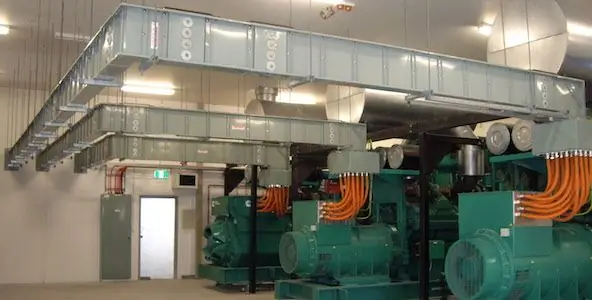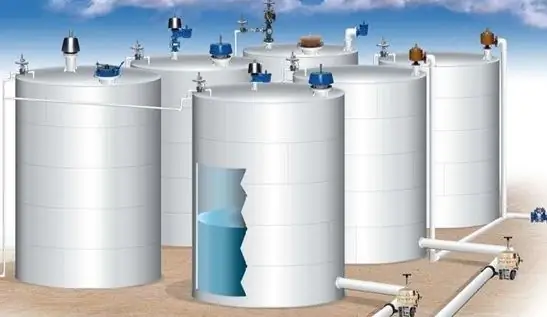2026 Author: Howard Calhoun | [email protected]. Last modified: 2025-01-24 13:10:35
Boiler equipment, whether it is a boiler in a private house or a large boiler room in an enterprise, is a source of danger. Boiler water jacket under constant pressure, potentially explosive.

To ensure safety, boilers and other heat generators manufactured today are equipped with many protective systems and devices. One of the simplest and most affordable is a safety valve installed in the heating system. It is sometimes also called an explosion valve.
Causes and consequences of coolant overheating
The problem of increasing pressure in the heating system is especially important for solid fuel boilers. An emergency situation, as a rule, occurs when the water in the heating boiler circuit overheats. As soon as the coolant heated above the norm boils in the boiler tank, it instantly turns into steam. This is followed by a sharp risepressure in the heating system of such a steam boiler.
As a result of overheating of the heating boiler, the risk of destruction of fittings and polymer pipes increases. Leaks can begin at the system's piping connections, up to pipe ruptures. The worst thing is a boiler explosion or an electrical short circuit in boiler equipment.
What is a relief valve for
Troubles associated with excess pressure in the heating system are extremely dangerous for people and buildings. Explosive valves are installed to prevent the severe consequences of overheating. Since the boiler itself is the source of the critical pressure increase, the valve should be located as close to it as possible. It is mounted on the supply heating pipeline.

Manufacturers of heating equipment often produce their products already equipped with safety groups - a pressure gauge, an automatic air vent and a reset valve. This group is usually built into the jacket of the heating boiler. If such equipment is not provided for in the purchased boiler, then you need to install it yourself.
When is a safety valve needed
Unlike solid fuel boilers, when using electric or gas, explosive safety valves are not installed. These devices have their own automation, and there is almost no inertia. This means that as soon as the temperature of the coolant reaches the set point, the electric element or gas water heaterturn off on their own. At the same time, heating also stops, which eliminates the risk of overheating, and, accordingly, pressure increase to critical values.
Solid fuel boilers, like furnaces with a water circuit, are systems in which the use of safety valves is mandatory. Whatever automation is in solid fuel heat generators, after heating the liquid in the network to the nominal value, the furnace will continue to raise the temperature for some time, although access to the chamber is closed by the sensor, and the flame began to die out. This is how the effect of inertia manifests itself. When the temperature in the furnace reaches 90-95 degrees (limit values for most boilers), vaporization is inevitable. The consequence may be a depressurization of the heating system or an explosion of the boiler.
If a safety valve is installed on the boiler in the system, then the increase in pressure after boiling the coolant will be prevented. The valve will automatically release excess steam to the outside, reducing the pressure in the system to normal. After that, the valve will close and work next time only if the abnormal situation repeats.
Relief valve device
The valve is made of tap brass using hot stamping technology. It consists of two parts that have a semi-solid state.
The main element of the valve is a special spring. Depending on its elasticity, the power of pressure is determined, which is applied to the membrane that closes the outlet. The standard position of the membrane is in the saddle, preloaded by this spring.

With its upper part, the spring rests against a metal washer, which is mounted on a rod, the end of which is fixed on a plastic handle. It is she who allows the adjustment of the explosive valve. The sealing parts and the membrane itself are made of polymer. Steel spring.
Valve principle
Being in standby mode, the entrance to the inner chamber is closed by a membrane. In the event of an emergency, the mixture of steam and water begins to rest against the membrane, opening it at peak pressure. As a result, the steam-water mixture enters the chamber and then exits through the hole on the side.
After the pressure is reduced, due to the release of a certain amount of water from the system, the membrane falls into place and blocks the water outlet. Sometimes such valves operate frequently, especially when the boilers are operating at maximum power. This is undesirable as the boiler may lose its tightness and leak accordingly.

If traces of leakage from the safety valve are found, it is necessary to urgently inspect the boiler and the heating system, since its operation is a sign of the heating system operating in extreme conditions. However, sometimes the expansion tank can also be the cause of emergency pressure relief. Therefore, be sure to check it out as well.
In addition to the considered valve, the PGVU valve can also be used - for dust and gas pipelines. It has the same operating principle. However, in the case ofIt does not matter at all whether it is a steam boiler or a solid fuel one, and also what exactly will be thrown out - water, steam or gas.
How to choose a safety valve
If a valve is not supplied with the boiler, it will have to be purchased separately. The choice is made based on the characteristics of the boiler plant. The heat output and the maximum possible pressure of the coolant in the heating system matter.
For reference. Most well-known brands of solid fuel boilers have a maximum allowable pressure of about 3 bar, with the exception of STROPUVA products. They have a limit of 2 bar.

It is best to install a valve that is adjustable in several ranges. Naturally, the values of the boiler installed in the boiler room must be included in these ranges. After that, the power valve is selected - the passport to the boiler will help here, in which the power limit of the unit in terms of heat is always indicated.
It is strictly forbidden to install an explosion valve after the pump responsible for the circulation of the coolant in the system. There is another rule. Shut-off valves must not be placed between the boiler and the relief valve.
For aesthetic purposes, it is recommended to connect a tube to the outlet of the valve, through which excess hot liquid would go to the sewer.
Recommended:
What is an ACS? Self-propelled artillery installation: classification, purpose

Self-propelled artillery mounts (ACS) are artillery pieces mounted on self-propelled chassis. Today we will find out in more detail what self-propelled guns are and why they are needed
Busbar installation: technology, equipment, safety

The quality of laying power lines depends not only on the stability of equipment and communications, but also on the safety of personnel. Busbar trunkings help organize reliable and compliant wiring, the installation of which increases the design possibilities when laying cables, and also provides a high degree of physical protection from external threats
Reservoir breathing valve: purpose, device, principle of operation, verification

Oil refineries and technological complexes using oil and gas products contain a system of pipelines for servicing fuel materials in their working infrastructure. Maintaining sufficient performance in the circulation circuits of the same oil requires the use of special plumbing fittings. Its key element is the reservoir breather valve, through which the pressure is regulated
Occupational safety specialist: job description. Occupational Safety Specialist: Key Responsibilities

As you know, every employee in any enterprise should have their own job description. The labor protection specialist is no exception to this rule. He, like other employees, has a number of duties and functions that undoubtedly require a detailed presentation on paper
High-voltage tests: purpose, algorithm, test methods, standards, protocol and compliance with safety rules

The operation of electrical equipment involves a number of high-voltage tests. They are very important for the correct operation of the devices. Their purpose. the algorithm for conducting, norms and compliance with safety rules are described in detail in this article

